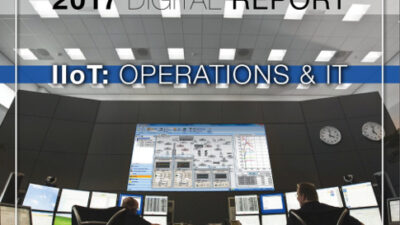Video surveillance is a hot topic today in many industrial applications for a number of reasons, says Ira Sharp, lead product marketing specialist for Phoenix Contact’s Interface Wireless products. Some applications involve simple monitoring for vandals. Other systems go further to watch and monitor process applications through video.
Video surveillance is a hot topic today in many industrial applications for a number of reasons, says Ira Sharp, lead product marketing specialist for
Phoenix Contact
’s Interface Wireless products. Some applications involve simple monitoring for vandals. Other systems go further to watch and monitor process applications through video.
Among decisions is whether to use an Ethernet-based or an analog-based video surveillance system, Sharp says, as he outlines key considerations:
Phoenix Contact offers Wireless Ethernet Radios.
–Most new video surveillance applications choose Ethernet, even though it costs more. Ethernet networks can be used for multiple applications. The same network cable supplying video data can be used for other applications, making the network universal.
–Analog-based systems use twisted pair or coax communications, which are dedicated networks for video surveillance applications. Each camera in the field would have a dedicated line back to the recorder to communicate the video data.
–In an analog system, the camera produces an analog signal, and the recorder only accepts analog signals.
–To use an analog system over a wireless Ethernet link, the signal must first be converted to an Ethernet protocol (such as TCP/IP) using a video server. A video server captures analog data in Ethernet packets to be sent over a network. In the case of a wireless system, the video server would typically wire directly to an Ethernet radio. The radio will send this data over the air to another radio, which will reproduce the data to another network. This network could be part of a large building-wide network or could interface directly to a video recorder. If the analog system has a recorder, the Ethernet-based signal must be converted back to analog.
–In an Ethernet-based system, where both the recorder and the cameras in the system have Ethernet connections, radios can simply be attached to the recorder and any of the remotely mounted cameras to provide a network connection between the points. No conversion is necessary. In both analog and Ethernet systems, more than one camera can be used at a single location, which would require only one wireless link. To transmit multiple cameras over a single wireless link, an Ethernet switch connects the various cameras to the radio.
Overall whether you are trying to expand an old analog-based video surveillance system or installing a new Ethernet based system, Sharp says, wireless Ethernet can be used as a mode of communications between remotely mounted cameras and a central recorder.
Here’s Control Engineering about industrial Ethernet video.
—Edited by Mark T. Hoske , editor in chief Control Engineering System Integration eNewsletter( Register here and scroll down to select your choice of eNewsletters free .)


